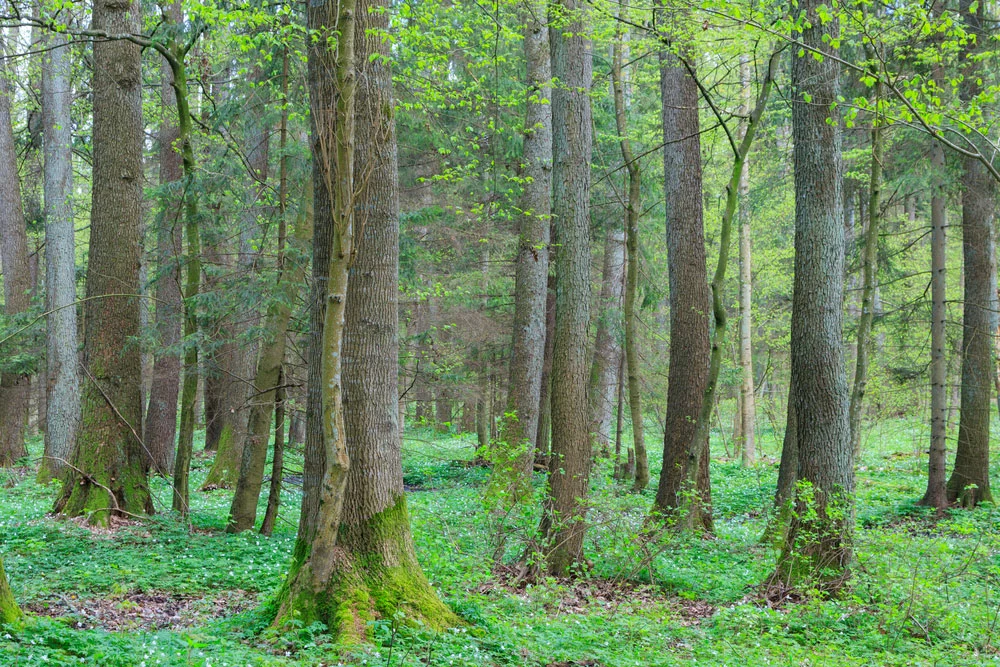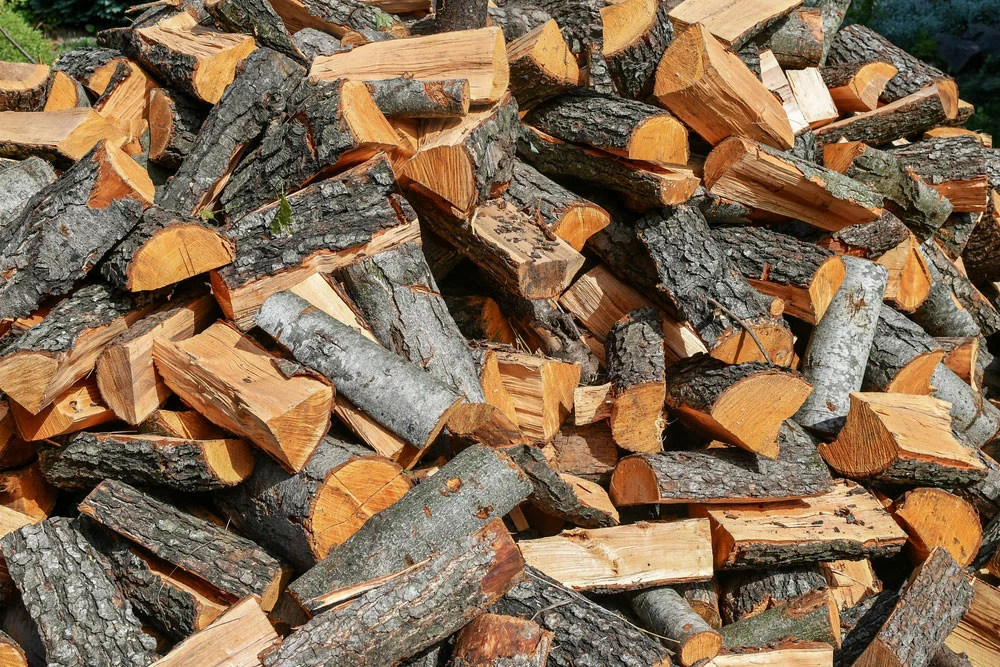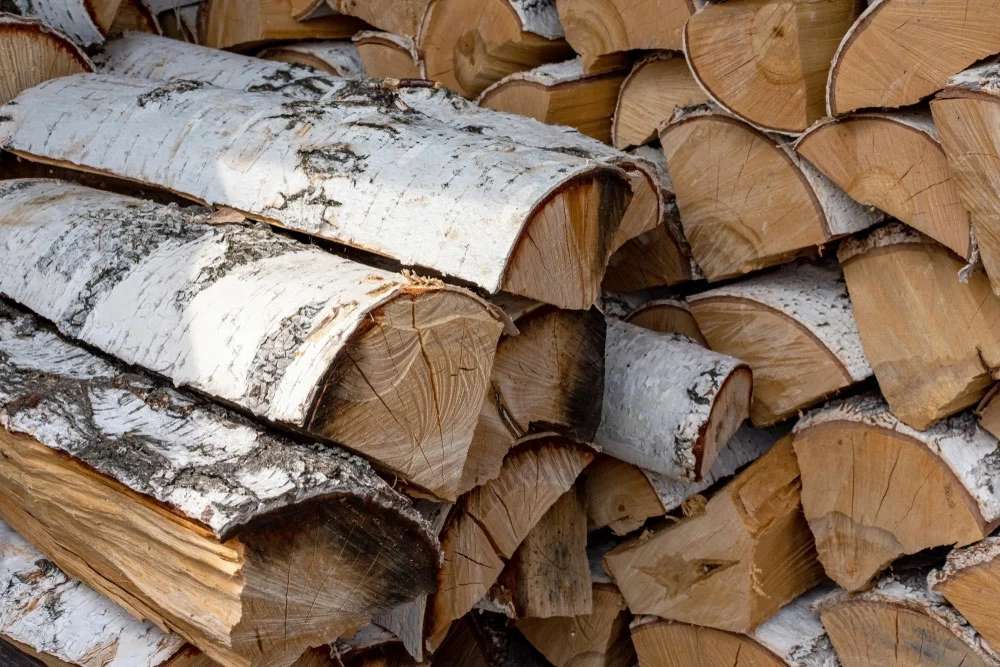Alder firewood is now a top choice for most hardwood uses, and its growing popularity is evident in its demand. As a fuel source, alder firewood is a budget-friendly source that you should add to your stack.
Let’s look at some qualities of the wood before you can settle on adding alder to your firewood stack.
What is Alder Wood?
Alder is straight-grained, soft hardwood lumber. It’s popular because it has a uniform color and appealing look. Alder is among the softest wood in the hardwood group and ranks just above poplar and pine.

A cross-section of the tree of sawn alder shows the tree
Burn Qualities of Alder Firewood
Heat Production
Alder firewood is easy to light. It burns rapidly, producing less heat than other hardwoods such as oak and apple. Alder produces 17.5 million BTUs per cord, thus only suitable for burning in the fall or spring.
Smoke Production
Properly seasoned alder has very little smoke. As a result, it is ideal for use in open fireplaces, campfires, wood stoves, etc.

Small campfire with gentle flames beside a lake
Seasoning Time
Alder firewood has a relatively short seasoning period. While in dry conditions, it requires 6 to 8 months to season appropriately. The short seasoning time is primarily because of the alder’s thin bark, which facilitates rapid moisture loss.
Burning Smell
Alder is a favorite among those who enjoy burning aromatic firewood. It emits a sweet, pleasant scent when lit in a room, creating a cozy and welcoming atmosphere.
In addition, it is critical to have delicious flavors in fish like salmon and trout if you like to barbecue.
Creosote Buildup
Creosote refers to unburnt particles that stick to the walls of the chimney and form layers. It is a product of smoke from burning firewood.
When adequately seasoned, alder firewood does not produce a lot of Creosote.
Keep in mind that Creosote is combustible. Therefore, ensure that firewood seasons adequately so that less Creosote builds up.

Dangerous accumulation of Creosote
Splitting
Alder wood has a loose grain and soft wood, which makes splitting simple. For instance, using an axe can reduce large logs into small pieces.
Alder Firewood Type
Alders come in over 35 different species, but the red and black alder are the two most common.
Here is a list of the top 12 alder trees.
Red Alder
- Red alder is the largest species of alder native to the Pacific Northwest of America.
- While in the fall, the leaves turn a yellow-brown color.
- The wood color can range from light tan to reddish brown, getting darker with age.

Red alders
Black Alder
- The Black alder (European alder) is native to Western Europe.
- The wood color can be light tan or medium brown.

European Black Alder
Green Alder
- Green alder is prevalent in Europe, North America, and Asia.
- It is a smaller species that resembles a big shrub or a little tree.
- Older bark tends to be grayish to reddish brown
Gray Alder
- Gray Alder is common in the cooler regions of North America’s Rocky Mountains.
- The branches are tomentose, gray, and smooth.
Hazel Alder
- The Hazel alder is a tiny tree or shrub in Eastern North America.
- It has a smooth, brownish-gray bark.
- The plant has a high affinity for moist, damp soil close to riversides, pond margins, and streams.
Italian Alder
- The Italian alder is a fast-growing species.
- It is common off the French coast and in southern Italy.
- The tree yields valuable reddish-orange wood.
Seaside Alder
- Also known as brook alder.
- It is predominant along North America’s northeastern coast and Oklahoma.
- Unlike other alders that bloom in the spring, Seaside alder blooms in the fall.
White Alder
- The White alder is native to North America.
- It has rapid growth reaching a maximum of about 50 feet.
- It has a smooth, light gray bark that becomes scaly on older trees.
Japanese Alder
- Japanese Alder originates from Korea, Japan, and some regions of China.
- They are little type trees that only reach a height of 25 feet.
- Its design concept is a shade tree.
Mexican Alder
- The Mexican alder is specifically native to Central America.
- It is a medium-sized tree and can reach heights of 20 to 25 meters.
- It thrives best in warm temperate areas for ornamental purposes.
Oriental Alder
- Oriental alder is native to Cyprus and Cilicia in Turkey.
- It can reach a height of 50 meters, thus best at providing shade.
Himalayan Alder
- Himalayan Alder is native to Nepal, the western Himalayas, and Pakistan.
- It serves as hardwood furniture in addition to producing natural dye.
- Himalayan alder has a wood density of 0.37 g/cm^3.

Old alder trees in spring
Comparing Alder to Other Firewood
How Long to Season Alder Firewood?
Alder for firewood creates a relatively short seasoning period. Generally, the American elm firewood takes roughly six months to season in hot and dry conditions. However, it takes about 12 months to season in cooler, wetter conditions thoroughly.
If you are planning on seasoning alder firewood, consider the following vital steps;
- Splitting the logs increases the surface area in contact with airflow and heat.
- Afterward, lift the wood. It would help if you made the air circulate underneath the stack of wood by resting the alder on wood blocks.
- First, divide the rows into heaps of wood 3 to 5 inches apart to enhance airflow.
- Then cover the wood: Use a tarp, to protect the firewood from snow and rain.
- Finally, the wood stack should face the wind and avoid shady regions simultaneously.

Stack of freshly chopped firewood of alder
How Can I Identify Alder Firewood?
There are a few distinctive characteristics that will go along in helping you identify alder firewood.
- Alder has a relatively straight grain and is white when freshly chopped. Once you expose the wood to air, it quickly turns light brown and has a red tinge.
- Then, the barks of Alder trees have a smooth texture and range in color from pale gray to pure white.

Stack of dried firewood from birch wood.
Conclusion
Alder scores admirably in terms of fragrance, ease of split, coal quality, and less seasoning time. However, it falls short in heat output and fire longevity. If you have any questions, please get in touch with us.
